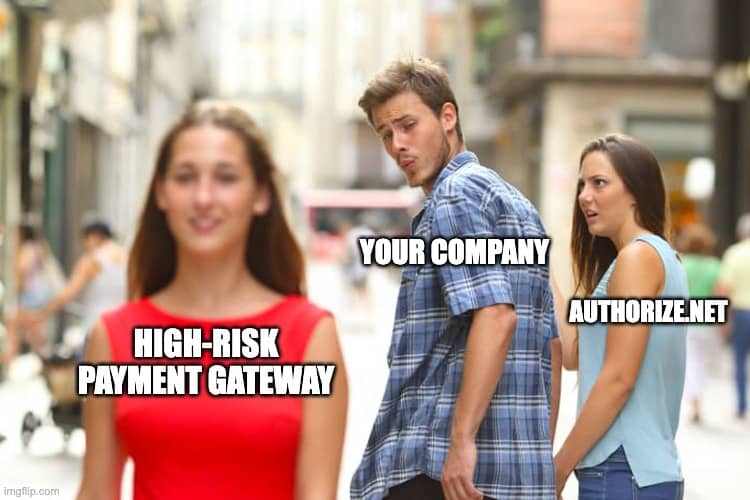ACH Reason Codes: Insufficient Funds R01

An Automated Clearing House (ACH) payment is an electronic payment that is debited or credited from one bank account to another. ACH payments are used for payroll, direct deposits, and bill payments.
The importance of understanding ACH reason codes cannot be overstated. ACH reason codes explain why a payment has been declined or returned. By understanding the codes, businesses can avoid payment declines and cancellations, saving time and money.
Table of contents
- What is an ACH insufficient funds code?
- Standard ACH insufficient funds codes and their meanings
- Strategies to reduce ACH payment declines
- Benefits of understanding ACH reason codes
- Rules and regulations for ACH payments
- The best ACH payment systems
- Common pitfalls to watch out for
- Conclusion
What is an ACH insufficient funds code?
An ACH insufficient funds code is an ACH reason code sent when a payment is declined due to insufficient funds. This code indicates that the person or business attempting to make the payment does not have enough money in their account to cover the expense.
Standard ACH insufficient funds codes and their meanings
- R01 – Insufficient Funds: This code is the most common ACH insufficient funds code. It is sent when the account holder does not have enough funds to cover the payment.
- R09 – Uncollected Funds: This code is sent when the account holder has enough funds to cover the payment, but the funds have not been collected yet.
- R10 – Customer Advises Not Authorized: This code is sent when the account holder has denied authorization for the payment.
- R11 – Check Truncation Entry Return: This code is sent when a check has been truncated (converted to an electronic payment) and returned due to insufficient funds.
Strategies to reduce ACH payment declines
- Ensure that payments are authorized: Businesses should ensure that payments are assigned before making them. This can be accomplished by having customers sign a form or provide verbal authorization.
- Keep an eye on accounts: Businesses should keep track of customer accounts to ensure they have enough funds to cover payments.
- Verify accounts: Businesses should verify customer accounts to ensure they are valid and active.
- Use payment reminders: Businesses can use payment reminders to ensure that customers are aware of upcoming payments and have enough funds in their accounts to cover them.
- Keep customers informed: Businesses should keep customers informed about payment declines and cancellations. This will help customers to avoid future declined payments.
Benefits of understanding ACH reason codes
- Minimize declined payments: Understanding ACH reason codes can help businesses avoid reduced costs by ensuring that payments are authorized and that customers have enough funds to cover them.
- Improve customer experience: Understanding ACH reason codes can help businesses to provide better customer service by keeping customers informed about declined payments and helping them to avoid future declined payments.
- Reduce costs: By avoiding declined payments, businesses can save time and money by not re-processing charges.
Rules and regulations for ACH payments
The National Automated Clearing House Association (NACHA) is the governing body that sets the rules and regulations for ACH payments. The rules and regulations are designed to protect consumers, businesses, and the financial system.
Some of the rules and regulations include the following:
- Authorization: ACH payments must be authorized by the customer.
- Timing: ACH payments must be processed promptly.
- Security: ACH payments must be secure and comply with industry standards.
- Accuracy: ACH payments must be accurate and complete.
- Notification: Customers must be notified of any declined payments.
The best ACH payment systems
- Stripe: Stripe is a popular ACH payment system that allows businesses to accept payments online easily. Stripe also offers fraud protection, payment analytics, and other features.
- Dwolla: Dwolla is an ACH payment system that offers businesses low fees and fast transfers. It also provides fraud protection and other features.
- Square: Square is a popular ACH payment system that offers businesses a range of features, including payment analytics, invoicing, and more.
- PayPal: PayPal is a well-known ACH payment system that offers businesses a range of features, including fraud protection, payment analytics, and more.
Common pitfalls to watch out for
- Unauthorized payments: Businesses should ensure that payments are authorized before making.
- Insufficient funds: Businesses should keep track of customer accounts to ensure they have enough funds to cover payments.
- Incorrect information: Businesses should verify customer accounts to ensure they are valid and active.
- Payment reminders: Businesses should use reminders to ensure that customers know about upcoming payments and have enough funds to cover them.
- Notifying customers: Businesses should keep customers informed about payment declines and cancellations.
Conclusion
Understanding ACH reason codes are essential for businesses that accept ACH payments. By understanding ACH’s insufficient fund codes and following the rules and regulations set by NACHA, companies can minimize declined payments and improve the customer experience. Additionally, businesses should use the best ACH payment systems and watch out for common pitfalls to ensure they are secure and accurate.
Want more information on how we can help your business thrive and integrate your payment processing with an ACH gateway? Contact us today, and learn more about what Zenti can offer you.
Read Next

Find out whether Authorize.Net works for high risk merchants, what restrictions you might face and how to get approved.

Get expert advice on selling CBD products on Shopify, including compliance tips and setting up secure payment options.

Find out why Square may deactivate merchant accounts and steps to resolve issues and maintain uninterrupted payment services.
Need a High-Risk Merchant Account?
Disruption-free payment processing at the best price for your situation, guaranteed.
Get Free Guidance Now!